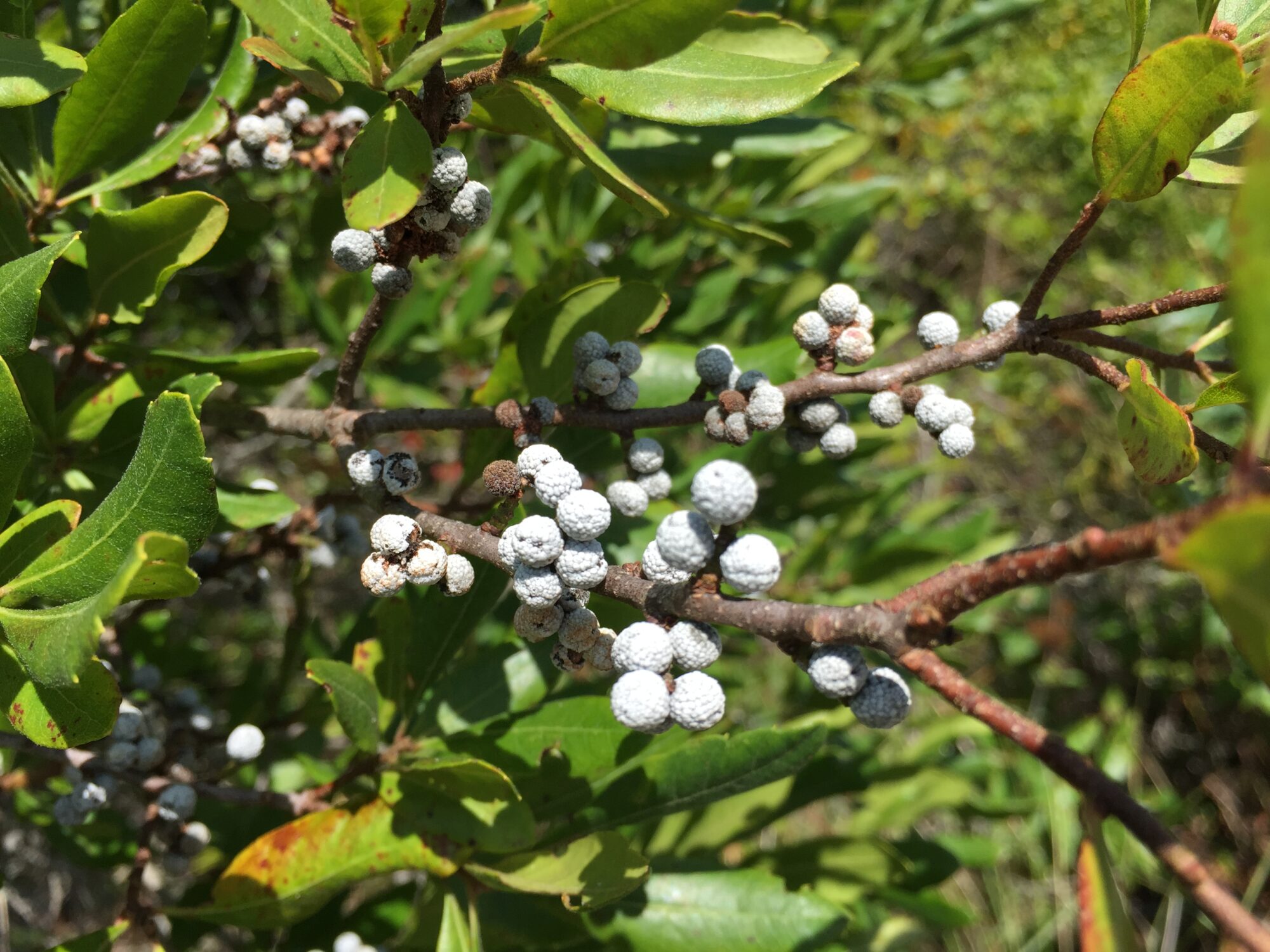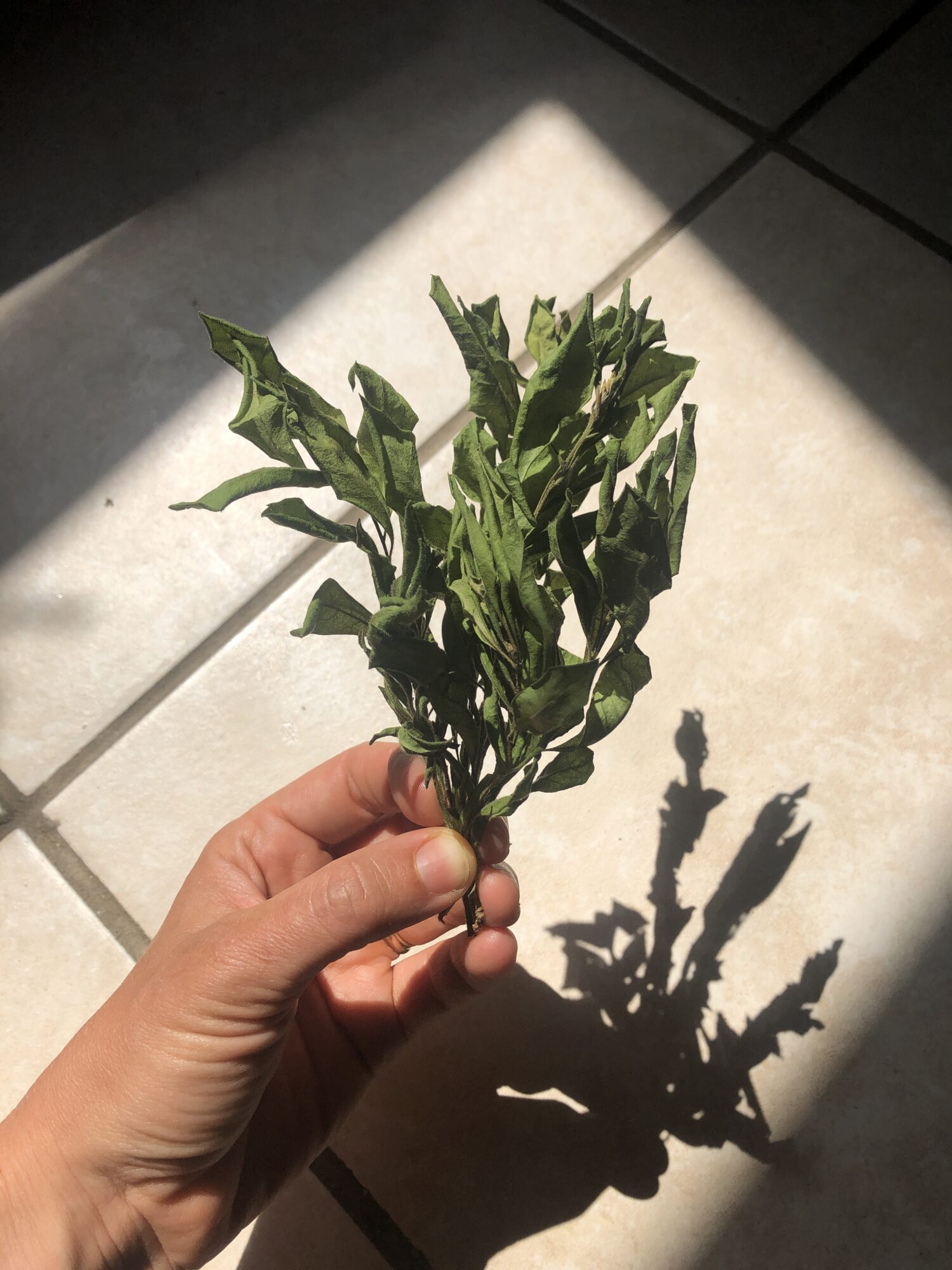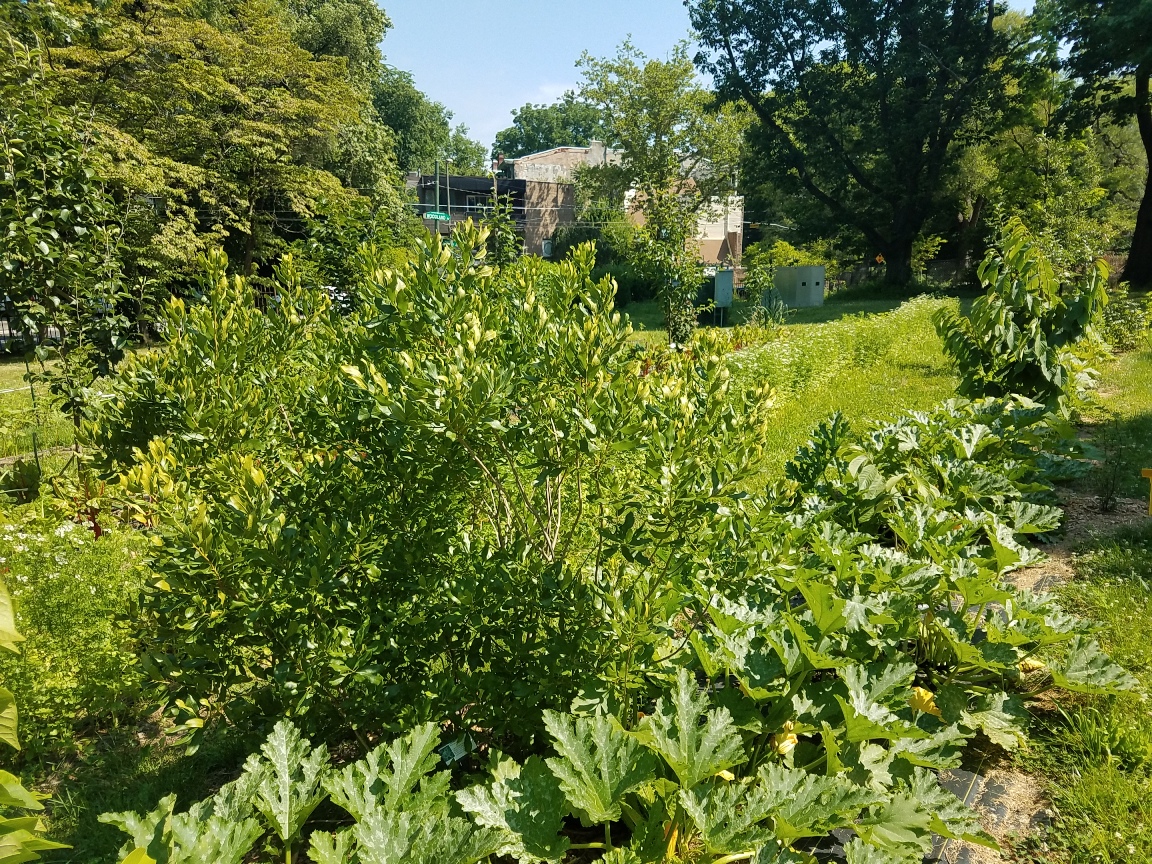What is Northern Bayberry?
(Morella pensylvanica, formerly known as Myrica pensylvanica)—also known as waxberry, wax myrtle, miracle bush, and candle berry—is a native, nitrogen-fixing shrub that grows six to eight feet high. It smells gorgeous; is hardy in zones 3-7; and does well in poor, clay, dry, wet, sandy and even salty soils. The only thing it seems not to like is heavy shade, although partial shade is fine. It is dioecious, meaning—if you want a plentiful and waxy berry crop, you’ll need to procure both a male and female plant. Once established, bayberry spreads through root suckers and can make an excellent hedge.
The indigenous people of this area used the bark of this plant as a blood purifier and for kidney trouble. European settlers who found the plant growing profusely along Cape Cod Bay called it bayberry. At that time the Europeans were using animal fat to make tallow candles which were both smoky and smelly. They were delighted to discover that harvesting wax from these native berries could yield a wax that was both fragrant and clean burning (as well as vegan and petroleum free). Today much of commercially available bayberry wax comes from Central and South America which is harvested from Morella cerifera, Southern Bayberry not Morella pensylvanica. Similar, but not the same. Real Northern bayberry candles are hard to find.

How do you make candles from a bush?
Gather the berries in the fall. Boil the berries until the wax dissolves into the hot water, then allow the pot to cool until the wax separates and rises to the surface where it can be skimmed off. You’ll struggle to get all the wax off whichever pot you choose to do this, so choose your pot wisely. The ratio of berries to wax is 4:1—meaning you have to gather four cups of berries to make a cup of wax. Big job, right? This is part of the reason bayberry candles are only used on special occasions. The most common tradition is to light the candle before midnight. If the candle burns completely out after midnight and before sunrise the following morning, it’s considered good luck. “A bayberry candle burnt to the socket brings food to the larder and gold to the pocket,” or so says a New England Proverb. To aim for this good luck you’ll need a small candle. Since making big candles is a ton of work, this particular superstition is conveniently arranged.
For more detail on bayberry candle-making, check out this article by the Provincetown Inquirer.
Enjoy bayberry tea
You can make tea out of fresh bayberry leaves or dried ones. The tea tastes a lot like the leaves smell, citrusy with a hint of sweetness. You can follow these directions to dry roast the plant and make a really full bodied tea that stores well.

Will deer eat it?
Absolutely! Deer don’t like the strong smell of the leaves, and will leave it alone most of the year, but the Northern bayberry loses its leaves in the winter, and once the killing frosts arrive, deer will munch the stems of your bayberries right to the ground. I lost half a dozen new bushes this way.
On a more positive note, bayberry provides important food for yellow-rumped warblers (Setophaga coronata). They can digest the berries unlike many wild creatures—like us, for example. Bayberry berries are toxic to humans. DO NOT EAT!
Why does it make a good companion plant for a food forest?
Although the berries aren’t edible, POP has been planting Northern Bayberry in our food forest orchards for a number of years. As mentioned above, it fixes nitrogen into the soil, thus feeding fruit trees and other plants around it. Research has indicated that Bayberry rates as a moderate nitrogen-fixer, ahead of some other plants commonly planted for that purpose (check out this article by Eric Toensmeier on how All Nitrogen Fixers are not Created Equal). What’s more, it’s a handsome, native shrub that can bring light to the darkness!

This blog post contributed by POP Volunteer Anisa George.
More Info
https://extension.umd.edu/resource/northern-bayberry
https://provincetownindependent.org/arts-minds/2020/01/02/making-bayberry-candles/
https://wildplantculture.com/home/2017/8/19/dry-roasted-bayberry-tea
http://www.perennialsolutions.org/all-nitrogen-fixers-are-not-created-equal
SUPPORT US! If you found this entry useful, informative, or inspiring, please consider a donation of any size to help POP in planting and supporting community orchards in Philadelphia: phillyorchards.org/donate.